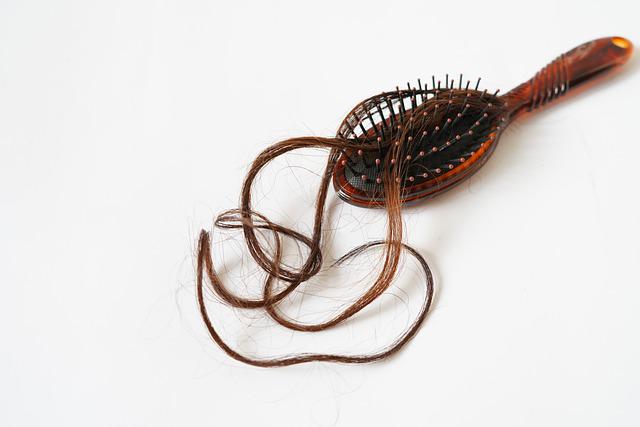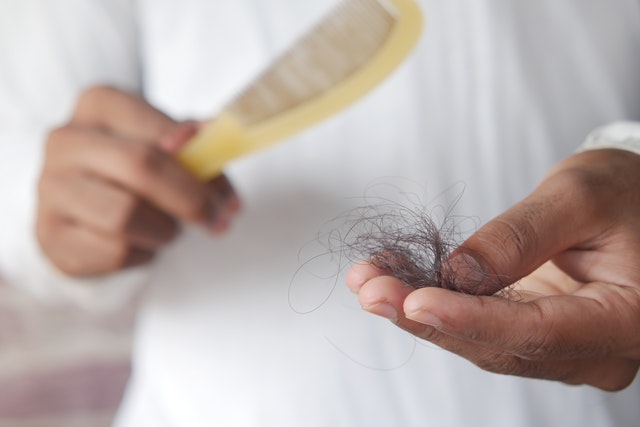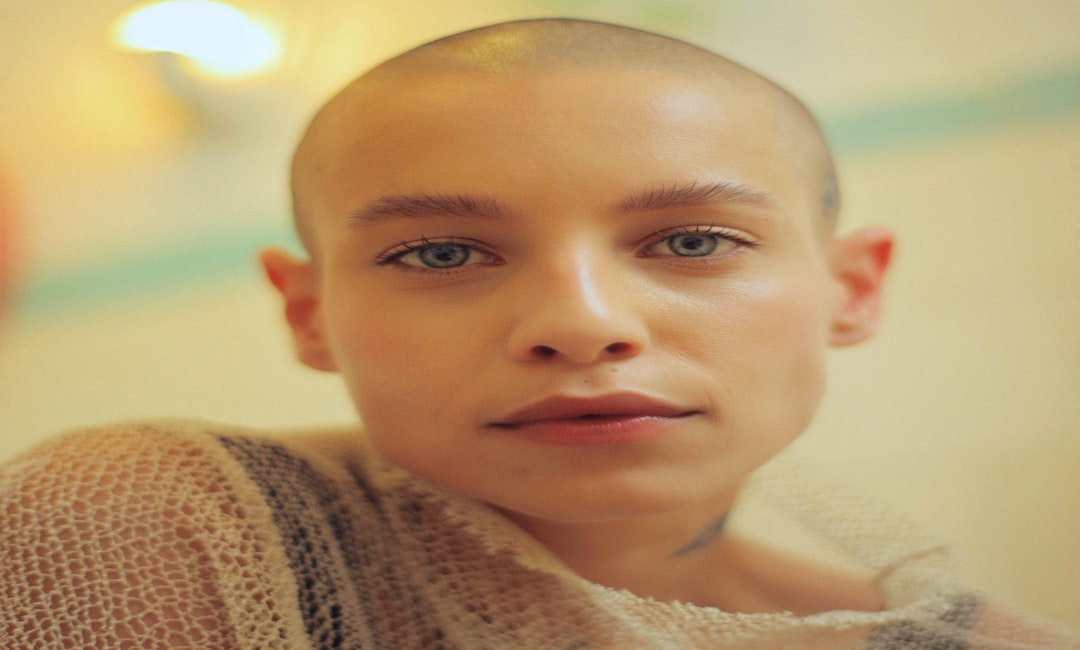What is Alopecia?
Alopecia or Hair loss is the medical term for bald. Baldness can develop anywhere on the body, including the scalp, beard area, eyebrows, eyelashes, armpits, inside your nose, or ears. It affects about 2 % of the population, no gender or age predominance and it’s not life threatening.
It can be temporary or permanent and can range from having bald patches to loosing the entire hair. This is a condition beyond the control of the individual and sometimes found embarrassing especially for African females where a lot of beauty is derived from their Hairs and more so the social media pressure to look good.
The 2022 Oscars will forever be remembered for Will Smith slapping comedian Chris Rock for making a joke about the actor’s wife, Jada Pinkett-Smith who had shaved her hair due to alopecia. This altercation had drawn tons of attention on body shaming and medical conditions. The positive thing about the awful incident is that so many people now know about alopecia.
Jada Pinkett- Smith, in 2018 during an episode on her talk show, Red Table talk, shared her struggles with alopecia. “ It was terrifying when it first started. I was in the shower one day and then handfuls of hair, just in my hands, and I was like ‘oh my God am I going Bald? “Jade said in the episode.
Types of Alopecia
-
Alopecia areata
Also known as spot baldness. There is sudden patchy hair loss. The patches of hair loss can grow larger. Sometimes join up. In some people. Hair can fall out so fast that the entire scalp hair is lost without any patches appearing.
- Alopecia areata (Patchy hair Loss) – shows up as round or oval patches on the scalp or other places on the body that grows hair. Sometimes referred to as chronic alopecia areata
- Alopecia areata Totalis – is characterized by a total loss of all scalp hair. For some people, the hair loss begins as typical Alopecia Areata patches. However, some people experience such rapid hair loss that patches are not seen before most of the scalp hair is lost.
- Alopecia areata Universalis – is characterized by hair loss across the entire scalp, face (including eyebrows and eyelashes), and the rest of the body (including pubic hair).
- Alopecia Areata incgnita – is characterized by sudden thinning of the hair all over the scalp rather than patches of hair loss. This condition can be hard to diagnose because it looks very similar to other types of hair loss, namely Telogen Effluvium and Androgenetic Alopecia (male or female pattern hair loss
- Alopecia Areata Barbae – occur only in the beard area, but can also happen alongside hair loss in other areas, such as the scalp
- Alopecia areata Ophiasis – Here, hair falls out from the sides and lowers back of the scalp. This can be very difficult to treat because it does not respond easily to medication

-
-
Chemotherapy induced Alopecia (CIA) or Anagen Effluvium
When the hair falls out following chemotherapy. It is one of the most visibly distressing side effects of commonly administered chemotherapeutic drugs. -
Trichotillomania
Psychological disorder where one keep pulling out his hair, thus leading to hair loss -
Traction Alopecia
Psychological disorder where one keep pulling out his hair, thus leading to hair loss -
Androgenic Alopecia
Psychological disorder where one keep pulling out his hair, thus leading to hair loss -
Telogen Effluvium
more hairs than usual move into the telogen (resting) phase and are shed, so you may notice more hair falling out than usual. This is often caused by a physical or psychological trigger and often resolves itself spontaneously. -
Scarring Alopecia
Hair follicles are destroyed and are replaced with scar tissue. They are Central centrifugal, Frontal fibrosing and Lichen Planopilaris.
- Central centrifugal – The hair loss starts from the centre of the scalp and slowly spreads outwards.
- Frontal fibrosing Alopecia-(FFA) – hair falls out across the front of the scalp. Hair loss can also affect the eyebrows.
- Lichen Planopilaris – patches of scalp appear, most commonly on the sides, front and lower back of the scalp.
Causes of Alopecia Areata
Alopecia areata is an autoimmune disease – here, the body’s immune system mistakenly attacks the hair follicles and suppresses its growth. In Alopecia Areata, cells from the immune system (a specific type of T cell, known as NKG2D+ T cells) gather around the hair follicles. These cells attack the follicle, stopping it from producing more hair. The exact way in which this happens and why is not yet understood. However, some predisposing factors have been identified viz
- Family history of alopecia areata
- Coeliac disease
- Type 1 Diabetes
- Rheumatoid arthritis

Symptoms
- Hairs begin to fall of the scalp.
- One or more well defined spot of hair loss.
- Thinning of the hair.
- Itchy or burning areas of hair loss
- May also affect the toe/finger nails.
-
- White spots or line on the nails.
- Thinning and splitting of the nail.
- Rough nail.
Diagnosis
- History
“I woke up one day and a whole patch of hair was gone. Gone. Whole patches of hair were just falling off.” That’s a big red flag. Diagnosis usually involves:
- Scalp Biopsy – A skin snip is taken from the scalp to rule out other causes of alopecia
- Trichoscopy – Examination of hair under the microscope
- Blood tests for autoimmunity-antinuclear antibody (ANA) immunofluorescence assay (IFA)
Treatment
There is no known cure for Alopecia areata but it can be treated. The aim of treatment is to stop further hair loss and to repair the hair and help it grow back more quickly. Treatment can be effective and effectiveness vary among individuals. Some examples of alopecia areata treatment includes:
- Steroids (cream/Injections)
- Topical Steroids: creams and ointment that are applied directly to the scalp or skin surface to dampen down the inflammation within the skin.
- Intra- lesional Corticosteroids- These are steroids that are injected into the affected areas just underneath the skin using a fine needle eg Hydrocortisone injection and Triancinalone acetonide(kenalog).
- Sytemic Corticosterois – These are steroids that are taken orally as pills or injection in the muscle (intramuscularly). Examples are oral prednisolone or intramuscular triamcinolone acetonide (Kenalog).
- Contact Immunotherapy – The aim of this form of treatment is to induce a local allergic skin reaction (contact dermatitis) that stimulates hair re-growth by distracting the immune system from attacking the hair follicles. In the UK Diphenylcyclopropenone (DPCP) is the most commonly used treatment.
- Immuno suppressive treatment – e.g Ciclosporin ,Azthioprine, and Methrotrxate- an oral treatment that suppresses the immune system commonly used in several inflammatory skin conditions such as Psoriasis and Eczema
- Minoxidil – A vasodilator licensed only to treat male and female pattern hair loss (Androgenetic Alopecia); however, it is also used to treat Alopecia areata
- Bimatoprost – 0.03% is a solution originally used as an eye drop to treat glaucoma. It was observed that in people using this treatment their eyelashes grew thicker and longer. Since then Bimatoprost (marketed under the name Latisse®) has been approved as a cosmetic product in the US to treat short and poorly growing eyelashes. When bimatoprost is used to treat eyelashes, it should only be applied to the upper eyelid margin at night time (with a small brush or cotton bud) but never put directly into the eyes.
- Sun screens
- Photo chemotherapy – (PUVA) is a type of ultraviolet radiation treatment used for alopecia areata. It is usually used in combination with topical 0.1% 8-methoxypsoralen.

Further treatment for Alopecia Areata
- Oral JAK (Janus kinase) inhibitor family, – which are important steps in causing inflammation, including the inflammatory pathways that occur in active Alopecia areata. Therefore, when these are blocked, inflammation is reduced. There are currently six JAK inhibitors that have been reported to be successful in treating Alopecia Areata. These are: Tofacitinib, Ruxolitinib, Baricitinib, CTP-543, PF-06651600 and PF-06700841. These are tablet medications.
- BNZ-1 – This is an intravenous medication (given through the vein) currently still being tested in clinical trials. BNZ-1 is an inhibitor of inflammatory pathways involving interleukins: IL-2, IL-9, and IL-15. These have been shown to be increased in Alopecia Areata
- Ustekinumab – This reduces inflammation by blocking the activity of chemical signaling molecules (called cytokines), specifically interleukin 12 and 23, that trigger inflammation. It is commonly used in psoriasis and Crohn’s disease. It has been shown in a small case series that it can help hair regrowth in moderate to severe Alopecia Areata.
- Dupllumb – is a biologic medication given through a subcutaneous injection (injection under the skin) that works by blocking chemical messengers (also known as cytokines) in the body called interleukin 4 (IL-4) and interleukin-13 (IL-13). It is currently being used to treat atopic eczema on the NHS. One study has shown a significant improvement in Alopecia Totalis.
- Apremilast – is an inhibitor of the phosphodiesterase 4 (PDE4), which reduces inflammation. PDE4 has been found to be expressed in patients suffering with Alopecia Areata.
If your hair starts falling off more than it usually does. Don’t just sit there, get checked .It could be a serious issue. Also menopausal changes can cause hair loss. Alopecia doesn’t cause pain but it is painful .It can lead to psychological health issues. It takes much guts and courage to embrace your hairless self. However it should not daunt and dent your confidence and charisma. Hairless is flawless too. Do not do it yourself. Get in touch with Alopecia foundations and get help.
In Uk, Alopecia UK works to improve the lives of those affected by alopecia through aims of Support, Awareness and Research. They facilitate peer support through various platforms, such as face to face groups as well as online chat spaces, and provide a wealth of useful information on their website.

